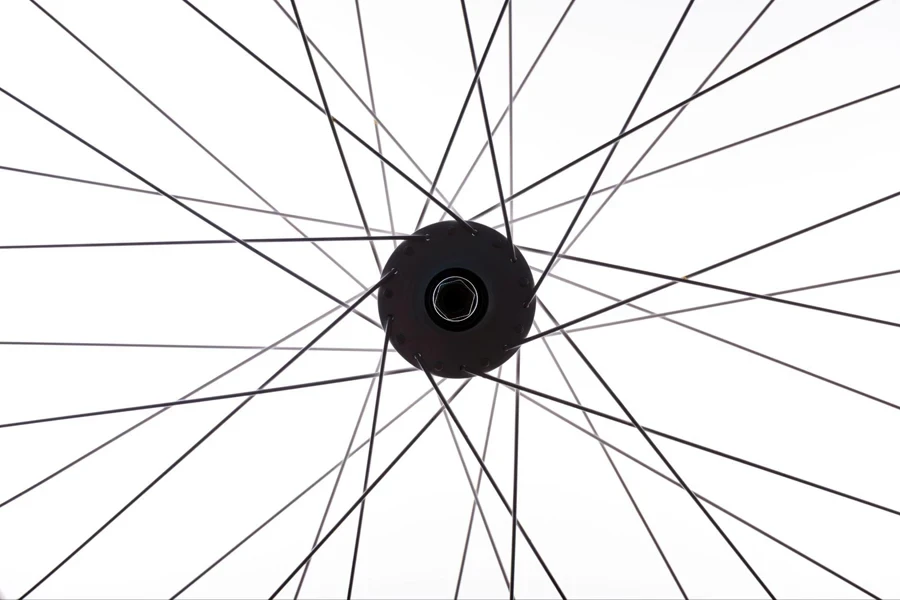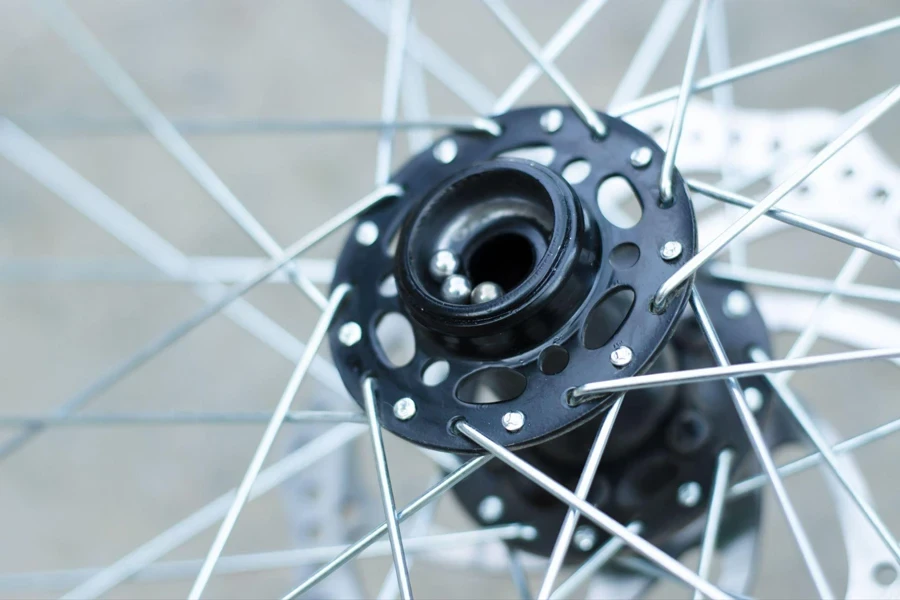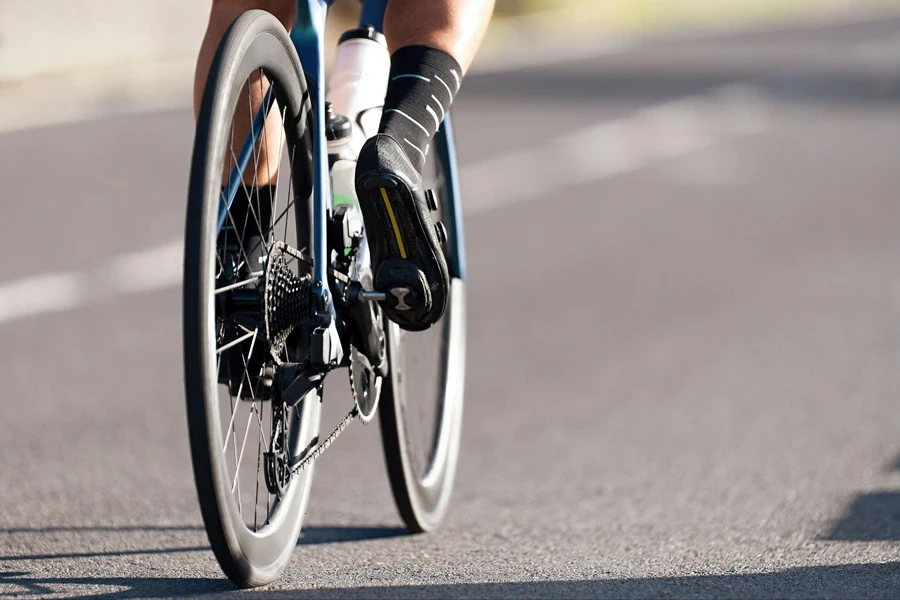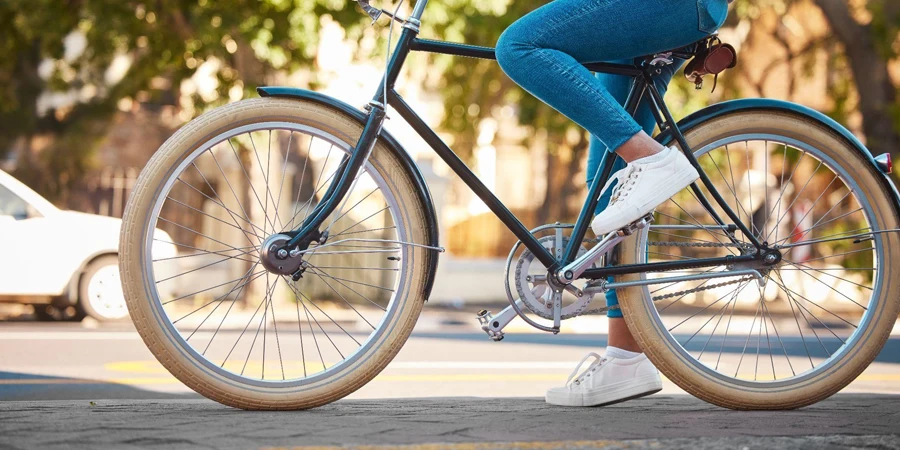Table of Contents
– Introduction
– Bicycle Wheel Market Overview
– Key Considerations When Choosing Bicycle Wheels
– Top Bicycle Wheel Picks for 2024
– Conclusion
Introduction
Selecting the right bicycle wheels can make a huge difference in the riding experience, whether your customer is a competitive racer, gravel adventurer, or trail shredder. With so many options on the market, it’s crucial to understand the key factors that influence a wheel’s performance, durability, and ride quality. In this comprehensive guide, we’ll break down what to look for when choosing bicycle wheels and highlight some of the top picks for various disciplines in 2024.
Bicycle Wheel Market Overview
The global bicycle wheel market continues to grow, with a projected CAGR of 6.8% from 2023 to 2029. In 2023, the market was valued at USD 7.4 billion and is expected to reach USD 12.1 billion by 2029. Major players like Shimano, Zipp, Mavic, and DT Swiss are driving innovation with new rim profiles, lighter materials, and improved hub designs. The popularity of gravel riding and e-bikes has increased demand for durable, wide-profile wheels. Carbon wheels are also gaining market share, with the carbon wheel segment forecast to grow at a CAGR of 27% from 2024 to 2028.
Key Considerations When Choosing Bicycle Wheels
Wheel Size and Tire Compatibility
Bicycle wheels come in various diameters to fit different bike frames and tire sizes. Road and gravel bikes typically use 700c wheels, which have a bead seat diameter of 622mm. Mountain bikes use 26″ (559mm), 27.5″ (584mm), or 29″ (622mm) sizes. Some gravel bikes also use the smaller 650b size (584mm) to fit wider tires in frames with limited clearance. When selecting wheels, ensure they are compatible with your frame and desired tire width. Rims with a wider internal width, typically 21-25mm for road and 25-30mm for gravel, better support wider tires. Wider tires, from 28-32mm on road bikes and 38-45mm on gravel bikes, offer better traction, comfort and lower rolling resistance, but require rims with an appropriate internal width to avoid handling and safety issues.

Rim Depth and Aerodynamics
Rim depth significantly affects a wheel’s aerodynamics and handling in crosswinds. Deeper rims (40mm+) are more aerodynamic, reducing drag at higher speeds. However, they can be unstable in gusty side winds, especially for lighter riders. Shallower rims (25-30mm) are lighter and easier to handle but sacrifice some aero benefit. Mid-depth rims (30-50mm) offer a good balance of aero performance and manageable handling for most conditions. Rim shape also influences aerodynamics, with modern U-shaped and toroidal profiles improving crosswind stability compared to older V-shaped rims. Computational fluid dynamics and wind tunnel testing have driven the trend towards wider, deeper rims that better manage airflow. However, the benefits of deeper rims diminish at lower speeds and on steeper gradients where weight becomes more important.
Rim Width and Tire Profile
Wider rims support wider tires and create a more stable, less light-bulb shaped tire profile. Road rims are typically 19-25mm wide internally, while gravel rims range from 21-26mm, and mountain bike rims range from 25-40mm or more. Wider rims allow running lower tire pressures and provide more tire volume, which improves traction, comfort, and resistance to pinch flats. A good rule of thumb is to use a rim with an internal width around 60-70% of the tire width for optimal tire shape and performance. However, wide rims are heavier than narrower ones and may not fit some frames with limited tire clearance. It’s important to match the rim width to the tire size based on the manufacturer’s recommendations to avoid handling and safety issues from using an excessively wide or narrow tire on a given rim.
Spoke Count and Lacing Pattern
The number and arrangement of spokes affects a wheel’s stiffness, durability, and weight. Higher spoke counts (24-32) make a wheel laterally stiffer and more durable yet add weight. Lower spoke counts (16-24) save weight, though they may result in a wheel that feels less stiff and is more prone to going out of true. Spoke count can vary between front and rear wheels, with rear wheels often having more spokes to handle the additional forces from pedaling.

Straight-pull spokes are stronger and more aerodynamic than J-bend spokes but are less common and not compatible with all hubs. Most wheels use a 2-cross or 3-cross lacing pattern, where each spoke crosses two or three other spokes, for a good balance of lateral and torsional stiffness. Radial lacing, where spokes go straight from hub to rim, is sometimes used on front wheels for reduced weight. It just offers less lateral stiffness. Asymmetrical rim designs can improve spoke bracing angle and balance spoke tension for a stronger wheel.
Hub Engagement and Durability
The hub is the heart of the wheel and contains the bearings and freehub mechanism. Look for hubs with fast engagement (less than 5 degrees), which makes the wheel respond quickly when pedaling. Engagement is determined by the number of points or teeth in the hub’s ratchet or pawl system. More points mean faster engagement. It may also have more complexity and potential for failure. Sealed cartridge bearings are lower maintenance than loose ball bearings yet can’t be serviced and must be replaced when worn.
High-quality bearings from brands like SKF or Enduro will roll smoother and last longer. Brass nipples hold spokes more securely than aluminum ones and are less likely to corrode, adding a small amount of weight. Straight-pull hubs eliminate the weak point of J-bend spokes. They are less common and not compatible with all rims. Hubs with swappable end caps allow using the same wheels on multiple bikes with different axle standards.

Tubeless Compatibility
Tubeless wheels and tires eliminate inner tubes, reducing weight and rolling resistance while allowing lower pressures. Tubeless-ready rims have a tight bead lock to seal the tire and are taped to hold sealant. Tubeless wheels require specific tires, valves, and sealant but offer superior comfort, traction, and puncture protection, especially for off-road riding. Road tubeless is becoming more popular yet still has some challenges.
Weight and Rotational Inertia
Lighter wheels accelerate faster and are easier to spin up to speed. However, aerodynamics and rolling resistance often matter more than weight, especially for wheels. Rotational inertia refers to how much energy is needed to accelerate the wheel. Wheels with more mass at the rim (deeper rims, steel spokes) have higher rotational inertia and feel less responsive. Wheels with less rim mass and lighter spokes (carbon rims, bladed spokes) have lower inertia and better acceleration.

Top Bicycle Wheel Picks for 2024
Best All-Around Road Wheels
The Zipp 353 NSW is a versatile, high-performance road wheel with a 45mm deep hookless rim, 25mm internal width, and Zipp’s signature sawtooth rim profile that optimizes aerodynamics at various yaw angles. The 353 balances aerodynamics, stability, and light weight at only 1255g for the wheelset. Zipp’s Cognition V2 hubs feature an Axial Clutch V2 mechanism for quick engagement and smooth coasting. The 353 NSW is ideal for riders seeking a do-it-all wheelset that excels in a variety of conditions.
Best Lightweight Climbing Wheels
The Roval Alpinist CLX II is an ultralight climbing wheel, weighing only 1248g with a 33mm deep rim. The wide 21mm internal rim works well with 25-28mm tires for a smooth ride and reduced rolling resistance. DT Swiss 240 hubs and DT Aerolite spokes keep the weight down while offering quick engagement. The Alpinist is ideal for long climbs and riders seeking the lightest wheelset that doesn’t compromise on performance.
Best Aero Road Wheels
The DT Swiss ARC 1100 DICUT 62 is the fastest wheel in our wind tunnel testing, with a 62mm deep rim, SINC ceramic bearings, and bladed DT Aerolite II and Aero Comp II spokes. The 1562g weight is competitive for an aero wheelset. The ARC 1100 uses a refined rim shape co-developed with Swiss Side to optimize aerodynamics and stability in crosswinds. DT’s 180 hubs and Ratchet EXP freehub system provide quick engagement. This wheelset is perfect for flat to rolling races and triathlons where speed is the top priority.
Best Gravel and Cyclocross Wheels
The Zipp 303 Firecrest is a versatile gravel and cyclocross wheel with a 40mm deep, 25mm wide tubeless-ready rim. At 1355g, it’s light enough for racing but durable enough for rough roads and trails. The 303’s wide rim provides a stable platform for wider tires up to 50mm. The 303 is also available in 650b size for smaller frames or more clearance. Zipp’s ZR1 DB hubs are designed for the demands of off-road riding. The 303 Firecrest lets you expand your riding horizons on any terrain.

Conclusion
Choosing the right bicycle wheels depends on your customers’ riding style, goals, and budget. By prioritizing the key features that matter most for their needs, you can narrow down the options and find the perfect wheelset. If you are interested in “Cycling”, please hit the “Subscribe” button to check more articles related to your business and interests in sports.




